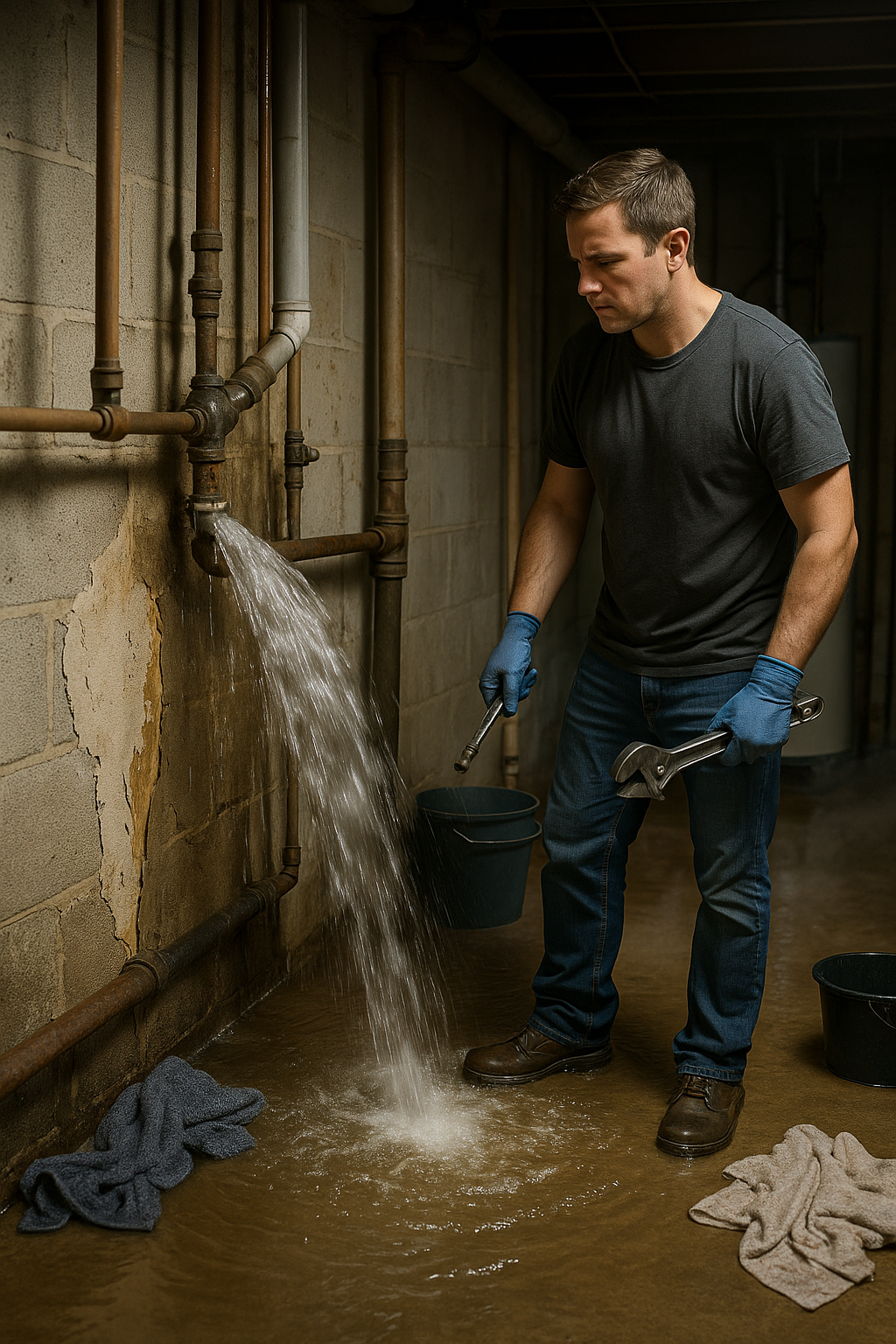
When a plumbing emergency hits—burst pipes, broken water heaters, or major leaks—it can feel like your world is collapsing. This guide will help you prepare backup strategies, spot early warning signs, and take temporary actions, all while strategically linking you to trusted professionals for swift, reliable response.
Introduction: What Qualifies as a Plumbing Emergency?
A plumbing emergency is any situation that poses an immediate risk to your property, health, or safety. Key examples include:
- Burst pipes or gushing leaks, especially when water floods floors or ceilings
- Significant hot water heater failure—leaks or no hot water
- Sudden sewer backups or strong sewage odors
- Flooding due to failed sump pumps
- Major water line damage causing loss of water service
Responding quickly can make the difference between a minor inconvenience and major damage. That’s why every homeowner needs a backup strategy: 24/7 professional access, a basic emergency toolkit, and safety-first action steps.
Section 1: Early Warning Signals
Knowing what to look for early can prevent a small plumbing hazard from becoming a disaster:
- Dripping or wet spots under sinks, behind toilets, or around water heaters—signs of hidden leaks
- Sudden drop in water pressure or noisy, vibrating pipes—suggest internal damage or blockages
- Visible rust or mildew, bulging drywall, or warped baseboards
- Unusual hard-water behavior (like limescale buildup or strange heater noises)—early signs of water heater issues
- Sewer odors or slow drains across multiple fixtures, indicating serious stoppage
Pro Tip: Add monthly checks of visible plumbing connections and drains to your routine—one of the best ways to catch trouble early.
Section 2: Temporary Fixes vs. When to Call the Pros
Step 1: Shut it down
- Water shut-off: Locate your main valve and any relevant fixture shut-offs. In emergencies, this should be your first move.
- Electrical safety: If water touches heaters, outlets, or appliances, shut off power at the breaker to prevent shock or fire.
Step 2: Contain the damage
- Use towels, buckets, and a wet–dry vac to contain water as it drains.
- Apply pipe clamps or plumber’s epoxy tape to small leaks—temporary only, but useful to buy time.
Step 3: Temporary repairs
- Burst pipe? Once water is off, open faucets to relieve pressure, wrap repair tape, and dry excess water.
- Clogged drain or toilet? Use a plunger or hand snake (avoid chemicals) to clear blockage. Boiling water may help eliminate grease clogs.
Step 4: Call the pros when
- You can’t stop the flow or contain the leak
- Sewage backup or major clog involving raw waste
- Damage is affecting heating, electricity, or structural components
- You’re unsure what to do—don’t risk damage or danger
Remember: knowing how to shut off your water is critical—you can find valve locations near meters, in crawl spaces, or outside.
How to Act Safely
- Fall-risk precautions: Always use dry towels and footwear when working around leaks
- Avoid chemical cleaners in emergencies—they can worsen damage or corrode pipes
- Stay calm—document & call: Photograph or video damage for insurance, while preparing for the plumber’s arrival
Section 3: Recovery Checklist After the Emergency
- Dry, dry, dry! Use fans, dehumidifiers, and proper ventilation to prevent mold
- Inspect walls & insulation—you may need to replace drywall or flooring
- Sanitize areas that had sewage or contaminated water
- Schedule a full inspection from a licensed plumber to assess damage, check water heaters, or test main lines
- Replace temporary repairs with permanent fixes—like new pipes, valves, or heating systems
Backup Strategy: Be Prepared
- 24/7 phone number: Keep emergency contacts accessible
- Home emergency kit: Include a plunger, pipe wrench, tape, repair clamps, putty, bucket, towels, gloves
- Know your valves: Label water shut-offs and breaker box panel
- Routine prep: Annual inspections, pipe insulation, plumbing checks reduce emergency risk significantly
Further Reading & Resources
For deeper professional guidance, check out the best plumbing emergency preparedness guide at Haynes Plumbing. And when a crisis hits, contact DC Washington Plumber emergency services for a fast, reliable response.
Final Take
Plumbing emergencies can be frightening—but with clear steps, quick action, and smart preparation, you can limit damage and protect your home. Remember:
- Know your early warning signs
- Keep an emergency toolkit and 24/7 professional help ready
- Practice temporary fixes safely, then call the experts
- Use a recovery checklist post-event
- Include strategic internal links to professionals for SEO and credibility
Stay prepared and confident: when emergencies go beyond duct tape and towels, DC Washington Plumber emergency services and Haynes Plumbing best practices are there for you.

